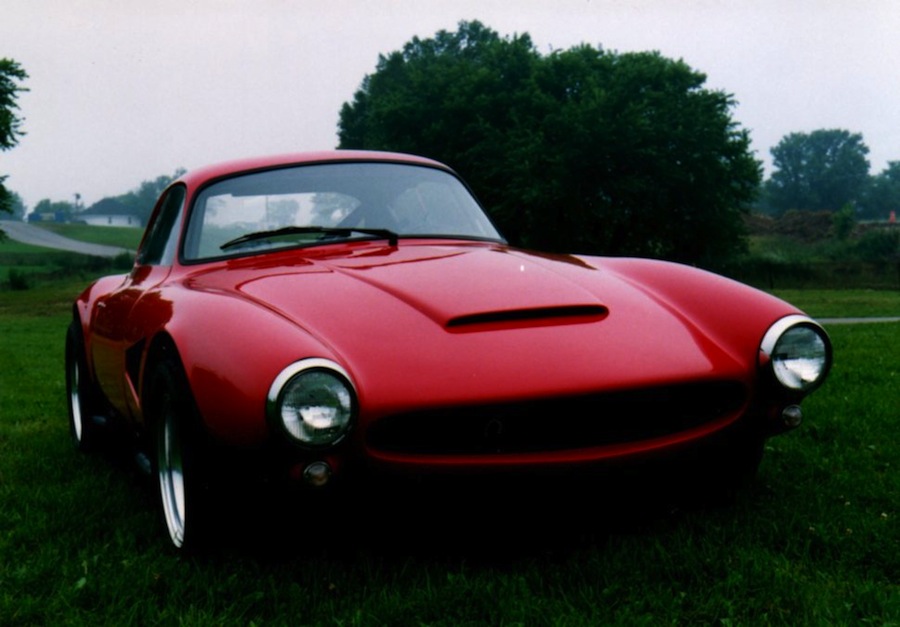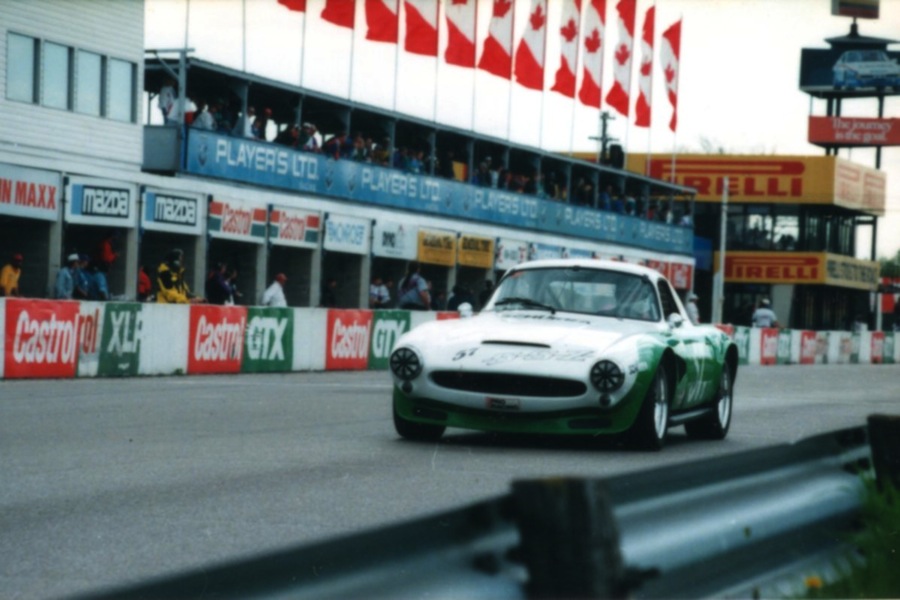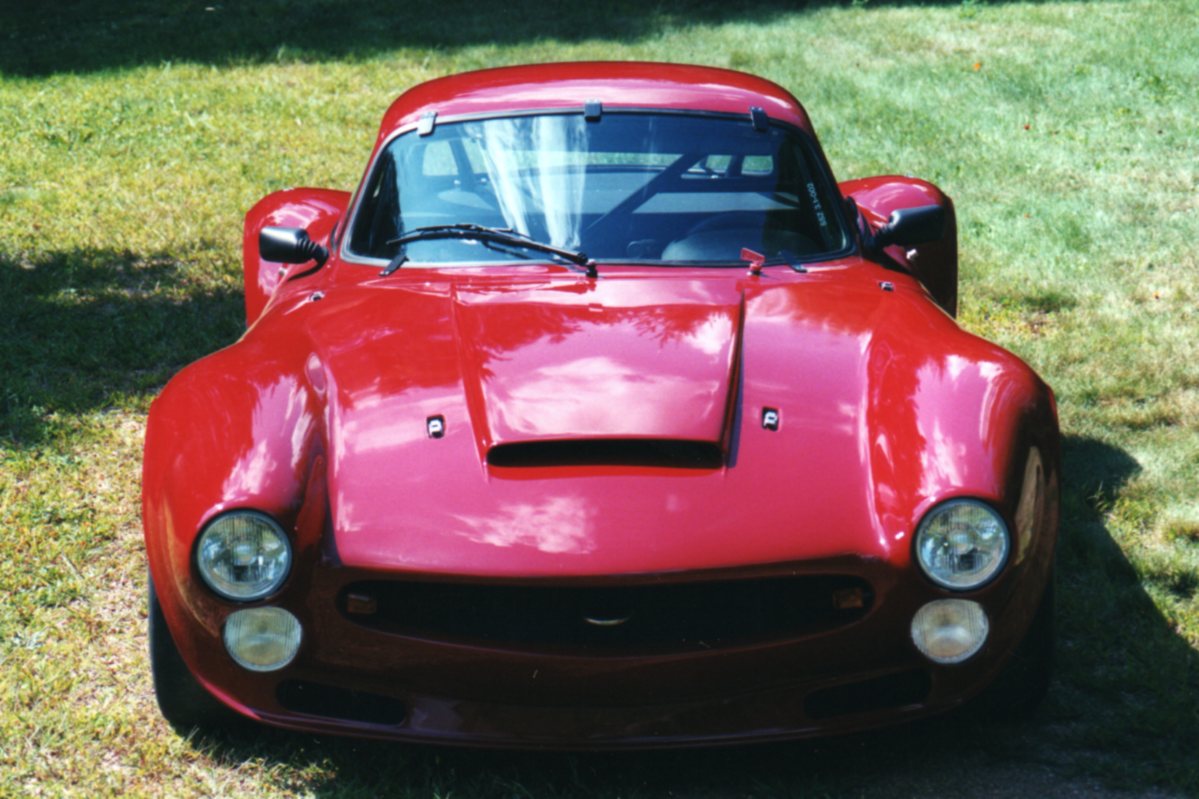SSZ Stradale on:
[Wikipedia]
[Google]
[Amazon]
The SSZ Stradale is an automobile developed by Tom Zatloukal, an Alfa Romeo racer and restorer, that was produced between 1984 and 1999.NAVI SSZ stands for Sprint Speciale Zatloukal. Based on the Giulietta SS, the aim was to produce a high-performance version with a lightweight and wider body than the standard production SS.
The original intent had been to produce a one-off vehicle for personal use. The car was well received at Alfa club events and Alfa historian Pat Braden nicknamed the car "The Zatmobile" and published photos in ''Alfa Owner'' magazine. A second car was built for Joe Benson, author of the ''Alfa Romeo Buyers Guide''. After several other customers expressed interest in purchasing a car, SSZ Motorcars was formed.
 The first production SSZ Stradale featured an all-new
The first production SSZ Stradale featured an all-new
 Although the chassis and suspension were the same, as the Mark 1 cars, the power was increased to over by utilizing a Nissan 3.0 L, four-valve, turbocharged engine. The transmission and rear axle were also upgraded. The body was widened, a front spoiler was added and a new rear clip was incorporated to increase
Although the chassis and suspension were the same, as the Mark 1 cars, the power was increased to over by utilizing a Nissan 3.0 L, four-valve, turbocharged engine. The transmission and rear axle were also upgraded. The body was widened, a front spoiler was added and a new rear clip was incorporated to increase
 Mark 3 cars were prepared in competition version only. The Electromotive 3.0 L twin-turbo engine developed . The cars had independent rear suspension and inboard disc brakes. A full flat bottom with a rear diffuser, air jacks, telemetry, and data acquisition were fitted. The body was wider, longer, and delivered with adjustable front and rear wings. It weighed in FIA GT2 trim.
Mark 3 cars were prepared in competition version only. The Electromotive 3.0 L twin-turbo engine developed . The cars had independent rear suspension and inboard disc brakes. A full flat bottom with a rear diffuser, air jacks, telemetry, and data acquisition were fitted. The body was wider, longer, and delivered with adjustable front and rear wings. It weighed in FIA GT2 trim.
 Mark 3.1 cars had the same chassis and body as the 3.0 sans wings. The engines were Chevrolet LS6 aluminum V8s coupled to a Richmond 5-speed. The wheels were changed to a traditional 5-bolt pattern. Like the 3.0, the cars were sold for competition purposes and were available without an engine. Several cars have been converted to street use.
Mark 3.1 cars had the same chassis and body as the 3.0 sans wings. The engines were Chevrolet LS6 aluminum V8s coupled to a Richmond 5-speed. The wheels were changed to a traditional 5-bolt pattern. Like the 3.0, the cars were sold for competition purposes and were available without an engine. Several cars have been converted to street use.
 These cars were mechanically the same as the 3.1. The body and chassis were longer for high-speed stability. Racing development was discontinued at the end of the 1999 season due to upheaval within the sanctioning bodies.
These cars were mechanically the same as the 3.1. The body and chassis were longer for high-speed stability. Racing development was discontinued at the end of the 1999 season due to upheaval within the sanctioning bodies.
 Stradales were campaigned in
Stradales were campaigned in 
Prototypes
A total of four prototypes were produced on Alfa 101 Sprint Speciale chassis. SSZ P1 has a steel body that is wider and lower than a standard SS, with a traditional hood and trunk. P2 incorporated a one-piece, fiberglass tilt front, perplex windows, and other lightweight components. The third prototype had tilt front and rear, side air outlets, a new taillight configuration, and an elongated greenhouse. The P4 added a hood scoop, wider wheel wells, and a mono wiper. Only P1 and P2 still exist as the P3 was destroyed during testing and the P4 was disassembled to pattern parts for production cars.Mark 1
 The first production SSZ Stradale featured an all-new
The first production SSZ Stradale featured an all-new tubular chassis
Superleggera (Italian for ''Superlight'') is a custom tube and alloy panel automobile coachwork construction technology developed by Felice Bianchi Anderloni of Italian coachbuilder Carrozzeria Touring Superleggera. A separate chassis was stil ...
combined with a Kevlar-reinforced fiberglass body. These cars were powered by an Alfa Romeo
Alfa Romeo Automobiles S.p.A. () is an Italian luxury car manufacturer and a subsidiary of Stellantis. The company was founded on 24 June 1910, in Milan, Italy. "Alfa" is an acronym of its founding name, "Anonima Lombarda Fabbrica Automobili." ...
3.0 L V6 engine with a 5-speed overdrive transmission coupled to an adjustable ratio live axle. Standard features included four-wheel 12-inch driver-adjustable brakes, adjustable coil-over suspension, rack and pinion steering, front and rear adjustable sway bars, fuel cell, and a fire system.
Mark 2
 Although the chassis and suspension were the same, as the Mark 1 cars, the power was increased to over by utilizing a Nissan 3.0 L, four-valve, turbocharged engine. The transmission and rear axle were also upgraded. The body was widened, a front spoiler was added and a new rear clip was incorporated to increase
Although the chassis and suspension were the same, as the Mark 1 cars, the power was increased to over by utilizing a Nissan 3.0 L, four-valve, turbocharged engine. The transmission and rear axle were also upgraded. The body was widened, a front spoiler was added and a new rear clip was incorporated to increase downforce
Downforce is a downwards lift force created by the aerodynamic features of a vehicle. If the vehicle is a car, the purpose of downforce is to allow the car to travel faster by increasing the vertical force on the tires, thus creating more grip. ...
. Five Mark 2 cars are known to have been produced.
Mark 3
 Mark 3 cars were prepared in competition version only. The Electromotive 3.0 L twin-turbo engine developed . The cars had independent rear suspension and inboard disc brakes. A full flat bottom with a rear diffuser, air jacks, telemetry, and data acquisition were fitted. The body was wider, longer, and delivered with adjustable front and rear wings. It weighed in FIA GT2 trim.
Mark 3 cars were prepared in competition version only. The Electromotive 3.0 L twin-turbo engine developed . The cars had independent rear suspension and inboard disc brakes. A full flat bottom with a rear diffuser, air jacks, telemetry, and data acquisition were fitted. The body was wider, longer, and delivered with adjustable front and rear wings. It weighed in FIA GT2 trim.
Mark 3.1
 Mark 3.1 cars had the same chassis and body as the 3.0 sans wings. The engines were Chevrolet LS6 aluminum V8s coupled to a Richmond 5-speed. The wheels were changed to a traditional 5-bolt pattern. Like the 3.0, the cars were sold for competition purposes and were available without an engine. Several cars have been converted to street use.
Mark 3.1 cars had the same chassis and body as the 3.0 sans wings. The engines were Chevrolet LS6 aluminum V8s coupled to a Richmond 5-speed. The wheels were changed to a traditional 5-bolt pattern. Like the 3.0, the cars were sold for competition purposes and were available without an engine. Several cars have been converted to street use.
Mark 4
 These cars were mechanically the same as the 3.1. The body and chassis were longer for high-speed stability. Racing development was discontinued at the end of the 1999 season due to upheaval within the sanctioning bodies.
These cars were mechanically the same as the 3.1. The body and chassis were longer for high-speed stability. Racing development was discontinued at the end of the 1999 season due to upheaval within the sanctioning bodies.
Racing
 Stradales were campaigned in
Stradales were campaigned in SCCA
The Sports Car Club of America (SCCA) is a non-profit American automobile club and sanctioning body supporting road racing, rallying, and autocross in the United States. Formed in 1944, it runs many programs for both amateur and professional r ...
, USRRC
The United States Road Racing Championship (USRRC) was created by the Sports Car Club of America in 1962. It was the first SCCA series for professional racing drivers. SCCA Executive Director John Bishop helped to create the series to recover rac ...
, FIA GT
The FIA GT Championship was a sports car racing series organized by the Stéphane Ratel Organisation (SRO) at the behest of the Fédération Internationale de l'Automobile (FIA). The championship was mostly concentrated in Europe, but throughout ...
, World Challenge, and Sports Car. Mark 1 and 2 cars won numerous events in SCCA club racing including the Continental Challenge and 5 track records. Elvira, the first Mk 3 auto, set three track records, had seven wins, and placed fifth in the United States Road Racing Championship
The United States Road Racing Championship (USRRC) was created by the Sports Car Club of America in 1962. It was the first SCCA series for professional racing drivers. SCCA Executive Director John Bishop helped to create the series to recover ra ...
. The Stradale competed in oval track, drag race, rally racing, and hill climb events with success.

Production Stats
Years produced: 1984 - 1999 The SSZ is no longer being produced. The Motorama Auto Museum in Wisconsin features over fifty vintage Alfa Romeos, several SSZ Stradales, prototypes, and other cars from around the world.Resources
{{reflist Rear-wheel-drive vehicles Coupés Sports car manufacturers W Car manufacturers of the United States